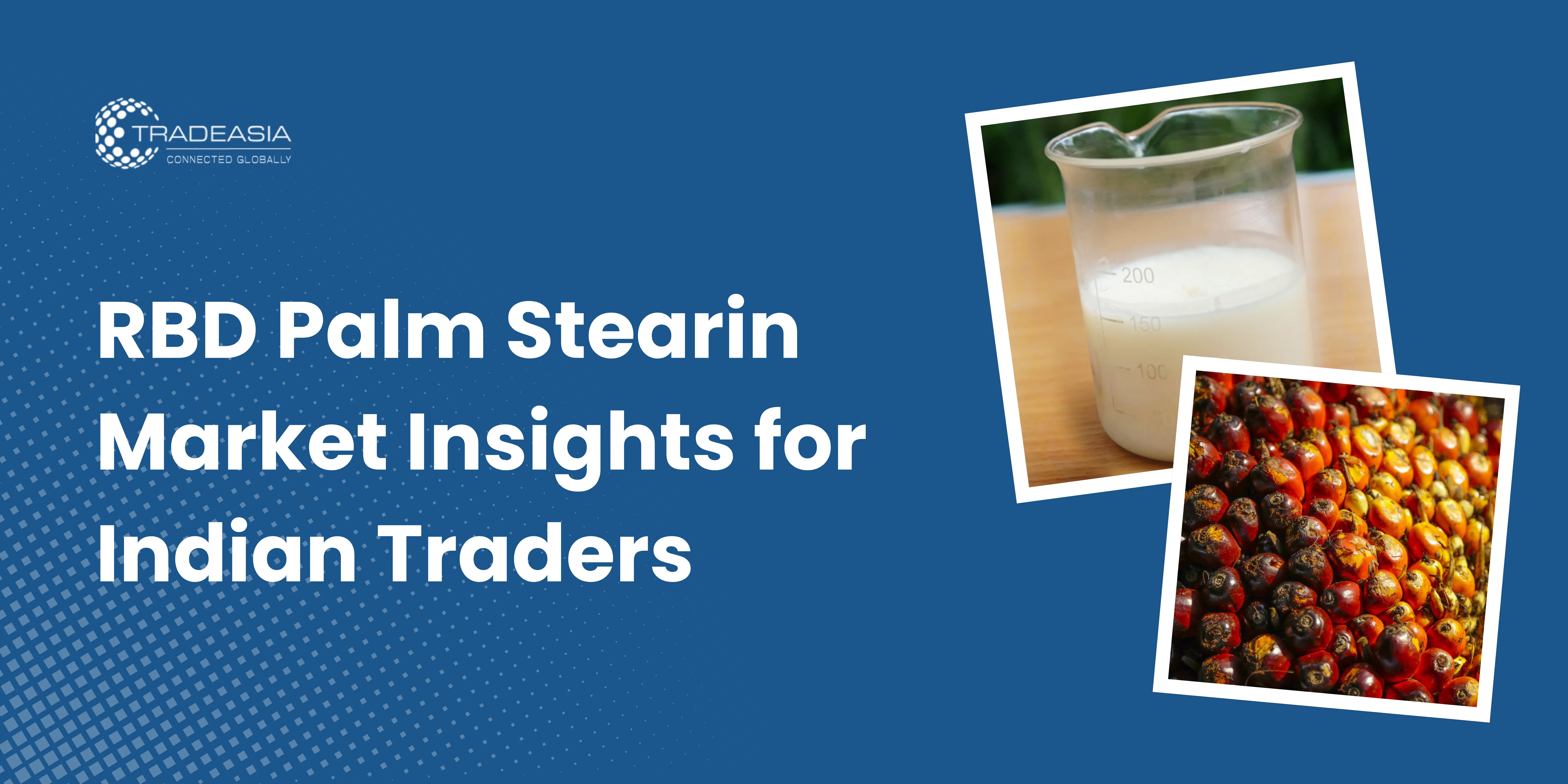Palm Stearin is a solid fraction obtained from the fractionation of palm oil. It has become an essential ingredient in India's industrial sector due to its versatility, cost-effectiveness, and stability. This product is widely used in the food industry, soap manufacturing, cosmetics, pharmaceuticals, and oleochemical industries.
India, being one of the largest consumers of palm oil and its derivatives, has seen a steady increase in the demand for Palm Stearin. The country relies heavily on imports from major palm oil producers such as Indonesia and Malaysia to meet its industrial needs.
With the growing emphasis on sustainability and eco-friendly manufacturing, the Indian market is shifting toward responsible palm oil sourcing to reduce environmental impacts.
Production and Processing of Palm Stearin
Palm Stearin is derived from palm oil fractionation, a process that involves cooling palm oil to separate the solid and liquid components. The solid fraction obtained is Palm Stearin, while the liquid fraction is Palm Olein.
Hydrogenation of RBD Palm Stearin
For some applications, Palm Stearin undergoes hydrogenation, which increases its melting point and enhances its stability. This form, known as Hydrogenated RBD Palm Stearin, is widely used in food processing, soap making, and industrial applications.
The refining process involves:
-
Degumming and Neutralization – Removing impurities.
-
Bleaching – Enhancing purity and color.
-
Deodorization – Eliminating unwanted odors.
-
Fractionation – Separating Palm Stearin from Palm Olein.
Key Applications of Palm Stearin in India
a. Food Industry
Palm Stearin is widely used in the food industry due to its stability and texture-enhancing properties. Common applications include:
-
Margarine and Shortening – Provides consistency in bakery and confectionery products.
-
Frying Fat – Used in deep-frying due to its high oxidative stability.
-
Dairy Replacements – Acts as an alternative fat in non-dairy products.
b. Soap and Detergent Industry
Palm Stearin is a primary raw material in soap and detergent production. It contributes to:
-
Hardness in Bar Soaps – Enhances structure and durability.
-
Improved Lather Formation – Creates a creamy foam.
-
Cost-Effective Surfactant – Cheaper than animal fats.
c. Cosmetic and Pharmaceutical Industry
Palm Stearin is commonly used in:
-
Lotions, Creams, and Lipsticks – Acts as a thickening agent.
-
Medicinal Ointments – Provides a stable base for topical treatments.
-
Personal Care Products – Used in shampoos, conditioners, and body washes.
d. Candle and Oleochemical Industry
Benefits of Palm Stearin
Palm Stearin offers numerous benefits across various industries:
✅ Cost-Effective Alternative – More affordable than animal fats and other hydrogenated oils.
✅ High Melting Point – Ideal for applications requiring heat stability.
✅ Sustainable Source – Derived from renewable palm oil.
✅ Enhanced Shelf Life – Improves product durability.
India’s Market Trends for Palm Stearin
The Indian market for Palm Stearin is growing due to increasing demand in:
-
Food and Confectionery Industry
-
Household and Industrial Soap Manufacturing
-
Cosmetic and Pharmaceutical Production
-
Oleochemical and Biofuel Sector
India primarily imports Palm Stearin from Indonesia and Malaysia but is gradually increasing domestic refining capacity to reduce dependency on foreign suppliers.
Challenges and Sustainability Concerns
a. Environmental Concerns
Palm oil production is often associated with deforestation and habitat destruction. India is taking steps to ensure sustainable sourcing through RSPO (Roundtable on Sustainable Palm Oil) certification.
b. Market Fluctuations
Palm Stearin prices are influenced by global market conditions, including supply chain disruptions and export policies from major palm oil-producing countries.
c. Regulatory Changes
Government regulations on edible oils and industrial palm derivatives impact market trends.
Future of Palm Stearin in India
India’s Palm Stearin industry is poised for growth, with key developments including:
-
Expansion of Domestic Processing Units – Reducing import dependency.
-
Adoption of Sustainable Palm Oil Practices – Increasing demand for certified products.
-
Innovations in Palm-Based Applications – Exploring new uses in biofuels and eco-friendly packaging.
The government’s initiatives to boost self-reliant palm oil production will further strengthen India’s position in the global Palm Stearin market.
Conclusion
Palm Stearin has become a crucial ingredient in India’s food, soap, cosmetic, and industrial sectors. Its affordability, stability, and wide range of applications make it a preferred choice for manufacturers.
However, as sustainability concerns grow, India is focusing on responsible palm oil sourcing to minimize environmental impact. With increasing domestic production and innovations in eco-friendly palm derivatives, the future of Palm Stearin in India looks promising.
For more information on Hydrogenated RBD Palm Stearin, visit:
? Hydrogenated RBD Palm Stearin
Learn more about the Palm Derivatives Industry:
? Palm Derivatives Industry

Leave a Comment